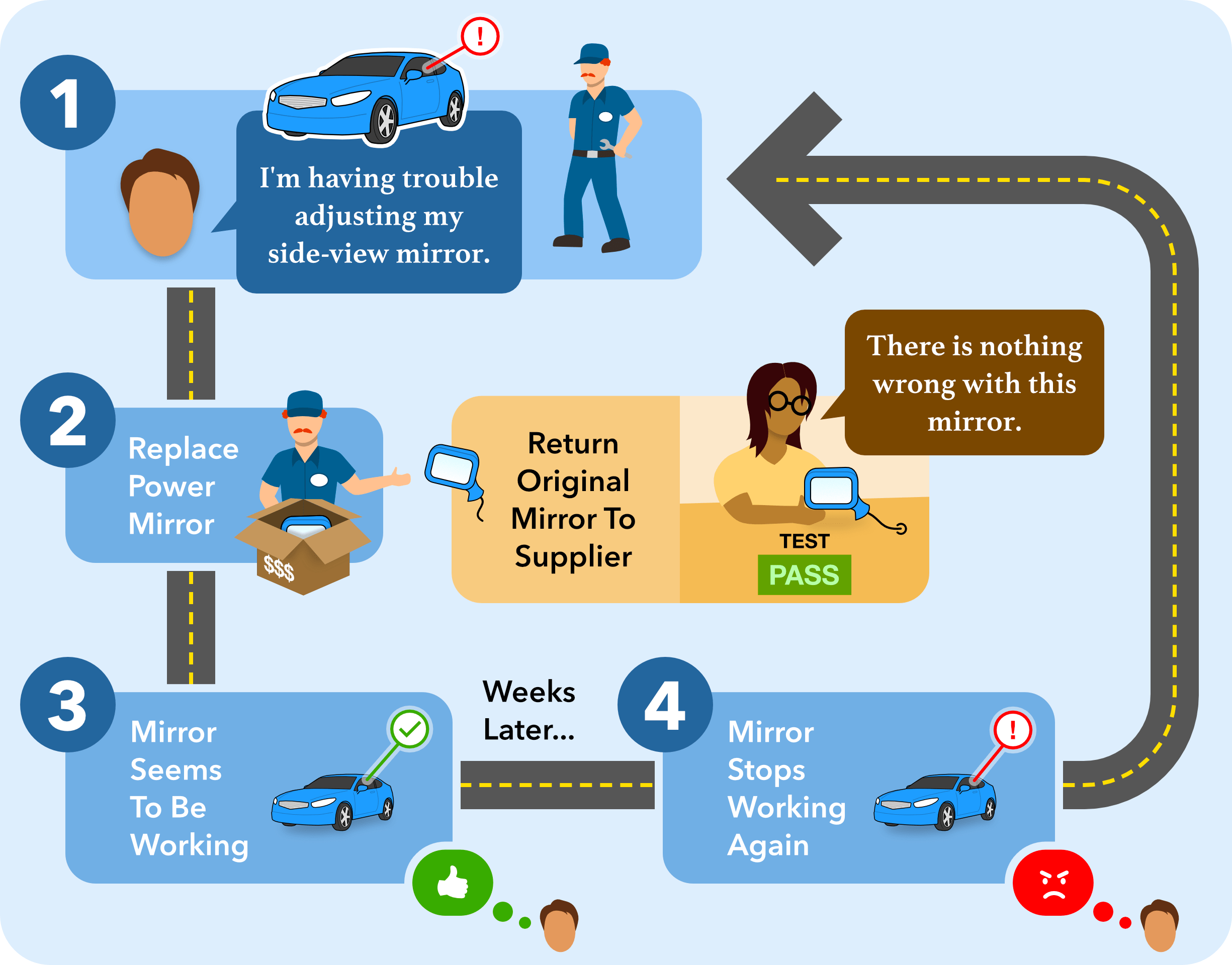
Does this sequence of events sound familiar? You notice a problem with your car and visit your repair shop. They diagnose the issue, perform a repair, hand you your keys and everything seems fine. And then a week or so later, the same problem shows up. This could be a case of No Trouble Found (NTF). NTFs arise when various vehicle components interact in unexpected ways, leading to “system-level” failures, without any individual parts being the root cause.
You may encounter an NTF when an initial repair (such as a part being replaced) only temporarily solves your problem. And so, on a subsequent visit, maybe some other part is replaced, and the situation repeats itself. Meanwhile, the replaced parts are getting inspected and tested by their manufacturers, who may not find anything wrong with them.
At your end, all that you find is that your problem was not fixed right the first time. Additional repairs and multiple visits were required for the single problem. While you may not pay directly for in-warranty repairs, you are likely paying out-of-pocket for all your post-warranty repairs. And in both cases your valuable time is being wasted.

NTF issues can increase safety hazards and prevent technicians from fixing-right the first-time (FRFT). They are a major cost driver across the automotive industry. By some estimates, NTFs account for over 50% of overall repair costs, which exceed $15B and $250B per year for in-warranty and post-warranty repairs in North America alone.
How can you, or your trusted technician, avoid NTFs? It is not easy for a single person, or even a handful of technicians, to avoid NTFs entirely. Manufacturers could collectively gather the parts, perform tests, and inform the public. But all of that would involve considerable resources. Alternatively, groups that have access to collected repairs data have a different way to suss out NTF cases by using data analytics. The results of such analytics could drive apps available to the average consumer. One example of this is CarBeast Insight.
While NTFs have been around probably as long as there have been vehicles, using data and machine intelligence to tackle them is relatively new. Artificial intelligence can learn from vast amounts of repairs data and the results can be delivered to your smartphone, allowing you to make informed decisions instantly.
Over the coming weeks, we'll explore specific cases of NTFs across various vehicle systems. We'll demonstrate how repairs data can be mined to identify which repairs failed to get the job done, and which repairs actually addressed the problem. This data-driven technology can detect NTFs, and save you time, money and a lot of hassle. Stay tuned!